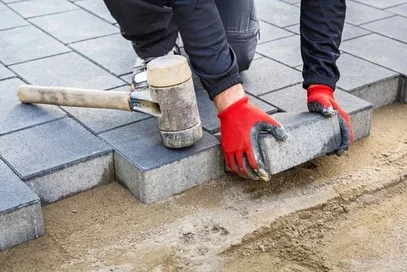A Variety Of Textures Are Available When Choosing Concrete Pavers For Your Patio

One of the most popular areas to use Concrete Pavers Miami are on driveways and sidewalks. Pavers are generally made from cementitious materials, which include gravel, sand, and rocks. This mixture is then poured into trays until it becomes hard enough to bear the weight of the pavers. In most cases, the entire project takes less than a day to complete.

Concrete pavers are available in a wide variety of textures and designs. Most come in a coarse texture for use in pavement and landscaping. There are also a wide variety of textures that can be used on driveways and walkways. Some of these options include crushed stone, rough ice and pebble stone. Each of these options provide a unique look that can coordinate with a wide variety of home styles.
Concrete pavers are commonly designed with two or more textured patterns. These textured patterns can either be natural stone or various synthetic designs. Natural stone textured pavers tend to look more natural and offer a warmer appearance while synthetic materials offer a more modern look. It is important to remember that all of these paver materials should be sealed prior to installation in order to prevent environmental damage.
Pavers with various textures and designs can also be made from a wide variety of materials. These pavers do not always require the same level of sealing as the concrete ones do. A variety of sealers such as liquid rubber, epoxy, polyurethane and other chemicals can be used to seal concrete paver materials. Sealing can be applied at the time of installation in order to prevent weathering of the pavers. The correct type of sealing can have a positive impact on the performance and longevity of these paver materials.
In addition to the many different textures and designs available, some concrete pavers can also come in clay varieties. Clay blocks can be used to create brick pavers. This process is commonly known as hot rolling. Many businesses and homeowners choose this process because it produces a faster and smoother result.
In addition to offering several different designs and textures, Concrete Pavers can also come in several color schemes. Various classic colors including white, gray, brick red and brick brown can be used for concrete pavers. These options are especially popular for driveways, walkways and the addition of colors can create dramatic effects. Bright colors can add additional visibility to the area while darker colors can provide a softer look.
There are several materials available for interlocking concrete pavers. These include stamped concrete, flagstone, precast and pressed gravel as well as crushed stone, sandstone and flagstone. Stamped concrete pavers come in a variety of designs and are the most popular of the different types of pavers mentioned above. These designs often incorporate geometric patterns to provide a unique look.
The most expensive among the different materials mentioned above are pressed stone, brick and clay. The reason for this is because natural stone is expensive to extract and is only commonly found in mountainous areas. Pressed clay pavers are made from a variety of clay particles and when heated they become soft and malleable. This makes them ideal for staining or painting. Once cooled, these materials can also be used as a type of concrete pavers.
Precast concrete pavers, on the other hand, are the most affordable of all concrete options. This type of material is made by pouring concrete into moulds and then concealing the moulds with plastic. These pavers have the most unique and varied textures and designs. By adding pavers to driveways, walkways and patios, homeowners can create the look they desire without spending a fortune.
When looking for concrete pavers to use as pathways, homeowners have many different styles and shapes to choose from. They range from simple rectangles to oblong shapes. Some varieties feature colorful geometric shapes that are meant to contrast against their white background. Other styles are designed to resemble bricks or stones so that they can stand out against their surroundings.
By varying the thickness of the slabs, homeowners can create the most unique and eye-catching designs. For example, a thick slab of sandstone could stand in contrast against a lighter-colored lawn. By varying the width of the slabs, homeowners can create a layered effect or create a sidewalk that runs along a fence or through a small garden. On the other hand, homeowners can use interlocking pavers if they want to create a smooth surface without changing the look of their yard. These interlocking pavers consist of two parallel slabs that lock together when completely installed.
